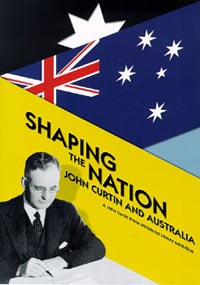 |
|
"The ideals that reached their climax at the end of the century in the federation of the Commonwealth were interpreted by each according to his needs and experiences. To Curtin, they were an almost fanatical belief in the future of a new Australia for the people, the importance of mateship, comradeship, solidarity; hopes of a world of peace, prosperity, equality and security; the federation of Australia and of the world." (Lloyd Ross, 1977, John Curtin: A biography MacMillan p.6) When Australia became a nation in January 1901, John Curtin was just sixteen years old. Both Curtin and the young nation were filled with youthful enthusiasm and hope for the future. And yet, both of them also carried with them the traces of social, political and economic inequality. For John Curtin came from a family which had experienced the problems of the 1890s depression. |
What then, were the dreams and fears of young Australia, an Australia here represented by John Curtin? What was the young nation like at the turn of the century? What issues motivated the nation and its citizens? How was that youthful enthusiasm tempered and shaped by experience as the years went by? In following the development of John Curtin's political thinking and career, this exhibition traces the development of Australia into full adulthood - to the moment when it had to stand apart from Britain and defend its own soil. This exhibition is an exploration, through the eyes of one of Australia's most prominent early citizens, of what it means to be a nation. Exhibition brochure (434k file) |
|
|
JCPML Home | Acknowledgements |
Essay
| Copyright Information |
